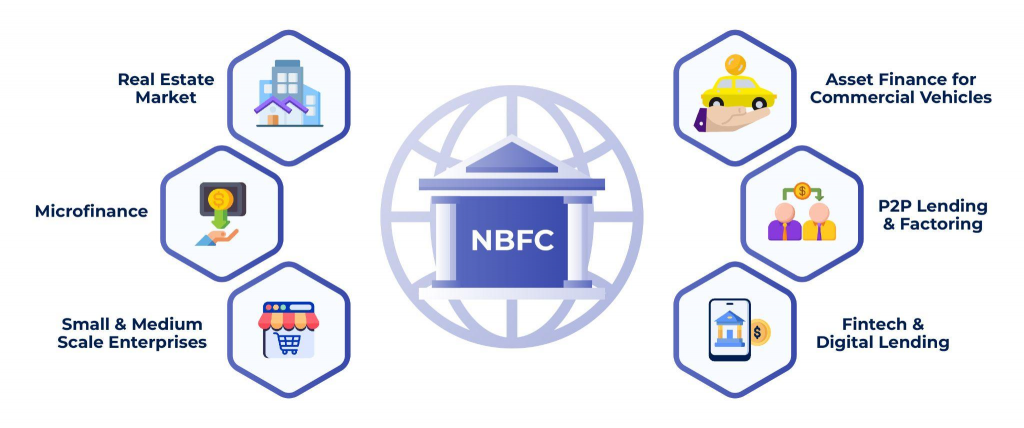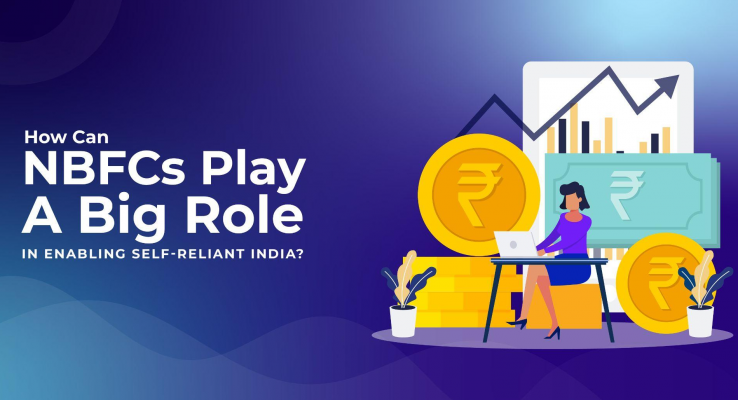Undoubtedly, India has become one of the world’s fastest-growing economies over the last few years. However, there still exists a wide gap in accessing formal credit options.
This is chiefly due to traditional banks’ stringent regulations, making it difficult for small or new businesses to secure loans. Additionally, there is an underserved/unbanked segment where people do not have adequate access to traditional banking services. Non-banking financial companies (NBFCs) can cater extensively to their needs and bridge this gap.
The Recent Credit Market
In the recent credit market, the loan-to-deposit ratio for public sector banks in India rose to 70.74% in FY 2012-2023. During the same period, private sector banks exhibited a higher ratio of 85.2%. On the other hand, foreign sector banks experienced a fluctuating ratio of 57.4% in FY 2019-2023.
Traditionally, formal credit was restricted to financial products like auto, home, and personal loans. However, in the last few years, banks, NBFCs, and other fintech companies have introduced newer products to consumers by shifting their focus to credit cards, credit EMIs, and buy now pay later (BNPL) schemes.
Moreover, in the last decade, India recorded a massive growth in its number of credit card users. Consumers are increasing their preference for using credit cards for big-ticket purchases to leverage premium lifestyle rewards, no-cost EMIs, cashback, and reward points.
Now, credit cards are not only issued by banks. NBFCs can also issue them by co-branding them with banks. However, the RBI is currently in talks with some significant NBFCs to allow such institutions to issue credit cards by directly tying up with RuPay, MasterCard, or Visa.
The Post-Pandemic Recovery of Finance in India
Whether post-pandemic recovery or attaining the goals under Atmanirbhar Bharat, NBFCs can significantly make India self-reliant. With their agile systems and last-mile connectivity, these financial institutions have contributed considerably to speeding up last-mile funding and understanding the credit requirements of the underserved/underbanked segment.
Additionally, over the years, NBFCs have undergone significant digital transformation. This has also been aided by the Indian Government’s push towards a digital economy, resulting in the development of personalised financial products and services that ensure faster credit disbursal.
To help NBFCs continue bridging the financial gap, the government announced several proposals in its 2023-24 Union Budget. Here are some of them:
● Till now, NBFCs have been able to cater to gold loan requirements ranging from ₹50,000 to ₹1 lakh. Thus, the authorities have decided to provide Priority Sector Lending status to gold loans. This shall enable NBFCs to offer gold loans at subsidised rates, thus fulfilling higher credit requirements.
● The government is also looking to increase the MUDRA refinance limit. It plans to do so by relaxing the eligibility criteria and intermediating NBFCs. This can result in fiscal growth worth ₹1 million to ₹5 million in the micro category.
NFBCs: Bridging the Financing Gaps

Here is how NBFCs are bridging financial gaps in various market segments:
● Real Estate Market
By 2027, India’s real estate sector is predicted to expand at 9.6% CAGR. However, a substantial financial gap exists between developer’s financial requirements and traditional banks. NBFCs can solve this problem by providing alternative financing options.
These include tailored financial solutions for real estate developers like project-specific funding, construction loans, structured debt instruments, bridge loans, lease rental discounting, mezzanine financing, etc.
Furthermore, NBFCs usually have a higher risk appetite than traditional banks. Thus, they are more likely to take calculated risks, which can benefit developers having unconventional or innovative projects.
● Microfinance
As per reports by the Microfinance Industry Network (MFIN), NBFCs contributed around 39.7% of micro-credit in the microfinance industry. They own the highest share in this segment with an outstanding loan amount of ₹1.38 crore as of 31st March 2023.
In this regard, Some driving factors are digital collection methods, strategies to maintain client relations, and RBI’s removal of the lending rate cap. This allows risk-based pricing, significantly enabling NBFC-MFIs to boost their returns on total assets (RoTA) and net interest margins (NIMs).
● Small and Medium-Scale Enterprises (MSMEs)
In India, more than 80% of MSMEs need help accessing formal financing options. According to a Standing Committee Report, this segment has almost a ₹20 to ₹25 lakh crore credit deficit.
NBFCs are working to bridge this gap by digitising lending and collection mechanisms, building dynamic underwriting models, and developing speciality products. They include loans against card receivables, small business mortgage loans, e-commerce loans, and more.
Additionally, as NBFCs have high-risk appetites, they even provide services like Supply Chain Financing (SCF) and invoice financing.
● Asset Finance for Commercial Vehicles
In India, almost 91% of commercial vehicle (CV) financing and 15% of new CV financing come from NBFCs. These financial institutions plan to create higher value propositions by digitising several stages of the loan life cycle. Moreover, they are developing favourable financing options by establishing partnerships with fleet management companies.
These include credit options for annual maintenance, fuel and tyre credit, repair, etc. Apart from this, NBFCs are leveraging third-party providers to cater to customers’ security and insurance needs.
● P2P Lending and Factoring
NBFC P2P lending platforms enable lenders to meet with potential borrowers and gain credit. Unlike traditional banks, they do not have stringent eligibility criteria and facilitate fund disbursal within a few hours of application.
Additionally, they employ an unconventional underwriting model for assessing borrower’s creditworthiness, enabling even individuals with no credit history to get loans. Credit options in this regard include P2P personal loans, home loans, business loans, auto loans, invoice lending, commercial real estate loans, etc.
Coming to factoring, the Indian Government has eased its regulatory requirements for NBFCs to undertake such activities. For instance, their total assets need to be greater than or equal to ₹1,000 crores as per their latest audited balance sheet, and they need to have a Minimum Net Owned Fund (NOF) worth ₹5 crores.
This will enable more NBFCs to participate in factoring activities, which can benefit small and medium-sized businesses.
● Fintech and Digital Lending
Indian fintech NBFCs are playing an active role in financial inclusion by offering services that are instant, cost-effective, and widely accessible. They foster entrepreneurial empowerment by providing digital payment solutions, easy funding, and various finance management tools like budgeting apps, insurance comparison tools, etc.
Additionally, fintech companies employ alternative credit score models. This allows individuals/businesses that do not have a formal credit history to get credit, make investments, and contribute to the nation’s economy.
NBFCs also play a leading role when it comes to digital lending. They have adopted online platforms for processing loan applications, providing rapid disbursals, and facilitating repayments. Moreover, they are actively integrating AI and machine learning algorithms to assess customer risk.
As a result, applicants can conveniently apply for credit right from their smartphones, get funds in the least possible time and fulfil their financial requirements whenever necessary.
The Future of NFBCs in India
In addition to fueling consumption demand in sectors like auto, consumer durables, and electronics, NBFCs contribute to the micro-entrepreneurial ecosystem and financially under-served individuals. Recent government interventions are expected to enhance credit flow, instilling consumer confidence in the market.
As India targets a $5 trillion economy, NBFCs will hold the key to contributing significantly to self-reliance by addressing the needs of the underserved/unbanked sector. With predicted 18.5% CAGR growth between 2021 and 2026, this becomes the playing field for new entrants to innovate and disrupt the existing barriers in the ecosystem, making it the sector to bank on.

